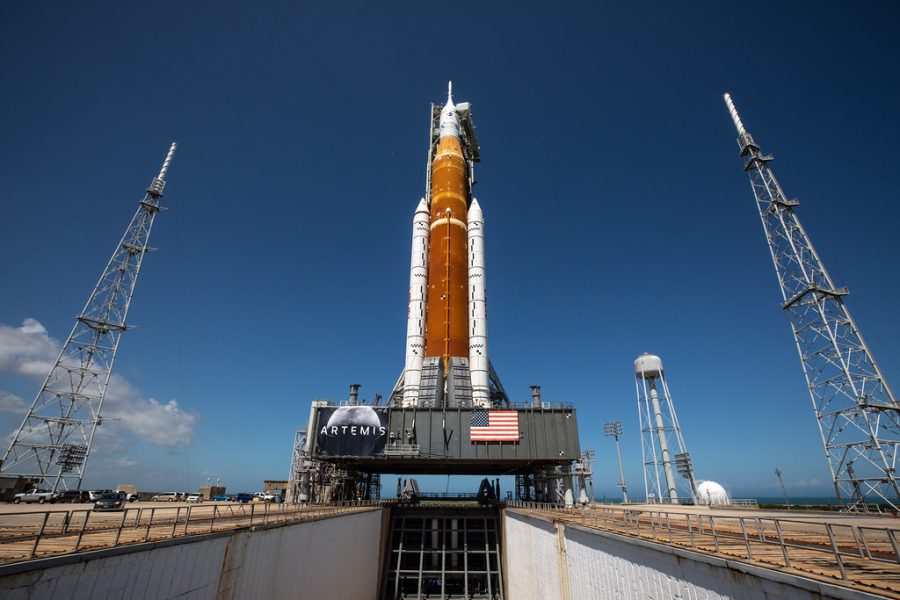Artemis I launch delayed due to engine issue
Stuart Rankin | Flickr
September 3, 2022
The National Aeronautics and Space Administration has postponed the launch of Artemis I on Aug. 29 after problems with one of the rocket’s four engines arose.
The Artemis I, consisting of the unmanned Orion spacecraft and the Space Launch System rocket, was set to take flight from the Kennedy Space Center in Florida. The next launch is set to take place on Sept. 2.
“We really need time to look at all the information, all the data,” Mike Sarafin, Artemis mission manager, said at a NASA press conference. “We’re going to play all nine innings here. We’re not ready to give up yet.”
One of the RS-25 engines on the core stage of the SLS rocket failed to reach the correct launch temperature, according to NASA, which led to the Monday lift-off being scrubbed.
This was one in a series of issues in the run-up to the flight. According to NPR, there were lightning strikes on the launch pad, a 45-minute weather delay that slowed the filling of the core-engine with hydrogen fuel and a discovered leak that was eventually resolved.
“This is a brand-new rocket. It’s not going to fly until it’s ready,” NASA administrator Bill Nelson said during the press conference. “Needless to say, the complexity is daunting when you bring it all into the focus of a countdown.”
The Artemis program would be the foundation for a series of missions that aim to return humanity back to the moon, bring the first woman and first person of color to its surface, and eventually extend humanity’s presence to Mars and beyond.
“We’re going back to the moon for scientific discovery, economic benefits, and inspiration for a new generation of explorers: the Artemis Generation. While maintaining American leadership in exploration, we will build a global alliance and explore deep space for the benefit of all,” the website for Artemis reads.
Future plans include an Artemis Base Camp on the surface of the moon and a space station in lunar orbit called the Gateway.
According to NASA, Artemis I is intended to test the integrated systems in place for “deep space exploration.” The main goals include testing Orion’s systems during spaceflight and the craft’s heat shield, and ensuring the safety of reentry, descent, splashdown and recovery of the crew module before the first crewed mission with Artemis II.
The mission will take place over 42 days. Orion is expected to travel a total of almost 1.3 million miles. It will use the moon’s gravitational force to launch itself into a “distant retrograde orbit,” launching itself 280,000 miles from Earth and 40,000 from the far side of the moon. This would be the farthest any vehicle made for humans would go, breaking Apollo 13’s previous record by 30,000 miles.
The heat shield is expected to experience temperatures of up to 5,000 degrees Fahrenheit as it travels nearly 25,000 miles per hour upon reentry into Earth’s atmosphere. The spacecraft is targeted to land in the Pacific Ocean off the coast of San Diego.
Additional tests will also be done to ensure the capabilities of Orion during its flight, including an optical navigation camera certification, star tracker thermal assessment and an Integrated Search and Rescue Satellite Aided Tracking (SARSAT) functionality.
According to an audit by the NASA Office of Inspector General, the Artemis program is projected to spend up to $93 billion by 2025.








